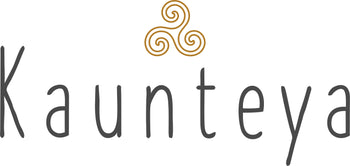Airavata
‘Misty daybreak and the first calls of the rooster in a scenic village have the men going to the river for ablutions, preparing themselves for a day filled with enchanting images of colourful deities, materialising from fine brushes and bright stone paints.’
Pattachitra, the heritage art of Odisha is based and closely related to the legends and tales of Lord Jagannath, an avatar of Lord Krishna. On the full moon day of Jyestha month, i.e, May to June, the deities of the Jagannath temple- Lord Jagannath, his sister Subhadra and his brother Bhalabhadra- are taken out for a ‘ceremonial bath.’ The tale says that due to the bath, the deities fall ill for 15 days. ‘This period is known as ‘Ansar’, i.e., the first fortnight of Ashada (June- July), and during this time devotees cannot have darshan of their beloved god.
This art form originated as a substitute for the deities so that the devotees could still worship their idols during the 15-day period when the idols were kept away from the public. ‘Traditionally, Pattachitra is painted by the artists of Raghurajpur, a heritage village in Odisha. Paralakhemundi, Chikiti, Dana Sahi and Sonepur are other centres where the art is practised.’ This art form now known as Pattachitra, was earlier called ‘Ansar Patti’, reflecting the 15 days of idols secluded. The word Pattachitra originates from two Sanskrit words, ‘Patta’meaning cloth and ‘Chitra’ meaning painting. Thus, suggesting a form of painting ‘traditionally done on cloth.’
Pattachitra painting is made with the use of completely natural colours, and the use of indigenous techniques and the application of the material. The colour white is obtained by the milky paste of sea shells that are powdered and soaked in the heat. ‘Kaitha gum’ and ‘bilwa fruit’ (wood apple and stone apple), are mixed with natural powders and used as adhesives. Red, yellow and blue are prepared from, ‘Hingula’, ‘Harital’, ‘Khandaneela’ respectively, the local stones found in Odisha. The colour black is made by holding ‘an earthen plate over the smoke of a burning wick.’ Lastly, the colour green is produced from green leaves and green stones. These are the five main colours used in Pattachitra painting called ‘Pancha- Tatwa’, and each colour also signifies a Rasa.
A special style of Pattachitra painting is ‘Talapatra Chitra’, a painting that is done on palm leaves. For this particular style, palm leaves are dried under the sun for a period of two to three months. Next, they are soaked in water and treated with a solution of turmeric, ensuring the longevity of the palm leaves.
Pattachitra paintings are mainly associated with the worship of Lord Jagannath. In the art, Lord Jagannath is represented in a ‘totem-like appearance’ along with his brother Balabhadra and his sister Subhadra, in the colours of black, white and yellow respectively.
Since Lord Jagannath is considered an incarnation of Vishnu, Pattachitra paintings also portray the ten incarnations of Vishnu. Episodes from Ramayana, Mahabharat, Bhagavat Gita, and Krishna Leela are also painted and inscribed. Some of the Pattachitra paintings convey the mode of religious practices and worshipping done to Gods and Goddesses. In addition, Odia folktales are also painted on the scrolls and recited. Pattachitra paintings are also nature-based, portraying trees, birds and animals beautifully and realistically. The ‘Kama Kunjara’ and ‘Kandarpa Rath’ are elaborately represented in the form of elephants and chariots. Lastly, this art form even portrays and represents erotic subjects.
Apart from Odisha, Pattachitra is widely practised in West Bengal as well. This art form can be called a ‘living art form’ since it is even practised in modern times and is prevalent even today.
The Airavata series of Kaunteya brings forward this traditional Odia art form with the concept of the Vahana’s of Gods. This series portrays various Vahana of Gods in the Pattachitra style. The majestic white elephant of Lord Indra, Simha, the golden skin lion, the wish-granting Nandi associated with Lord Shiva, the golden-bodied king of birds Garuda associated with Lord Vishnu, Mayur that adorns love, and Ooloka, the owl, the spiritual wealth seeker. All these Vahana’s are well portrayed in Airavata with the use of modern techniques and traditional art forms. The subtle shades and the bold lines enhance the expressions of the various Vahanas, and lastly, the 24k gold plating provides the final finish.























